California can’t seem to get enough of the accessory dwelling unit (ADU). The number of permits submitted and approved in the Golden State for the secondary residence has jumped from just under 9,000 a year in 2018 to nearly 30,000 in 2022 when more homeowners recognized it as a key tool to address a dire housing shortage, for a secondary income, or just a means to maximize space. And while design was often an afterthought for the granny flats of yore, architecture firms are increasingly taking on such projects, and deftly navigating their tight footprints with clever sleights of hand. The Crest ADU in Marin County, designed by San Francisco– and Oslo-based firm Mork-Ulnes Architects, is a thoughtful exemplar of this larger trend.
The one-and-a-half story project is located on a hillside, atop the foundation slab of a demolished garage built in the 1950s. The ADU serves as a temporary home for the client, a family of three, while the main house undergoes renovation. The limitations of the platform—it measures just over 300 square feet, with a sleeping loft above adding 100 more square feet—impelled the architects to take what they term a “Swiss Army knife” approach to the project, packing in as much overlapping program as possible.
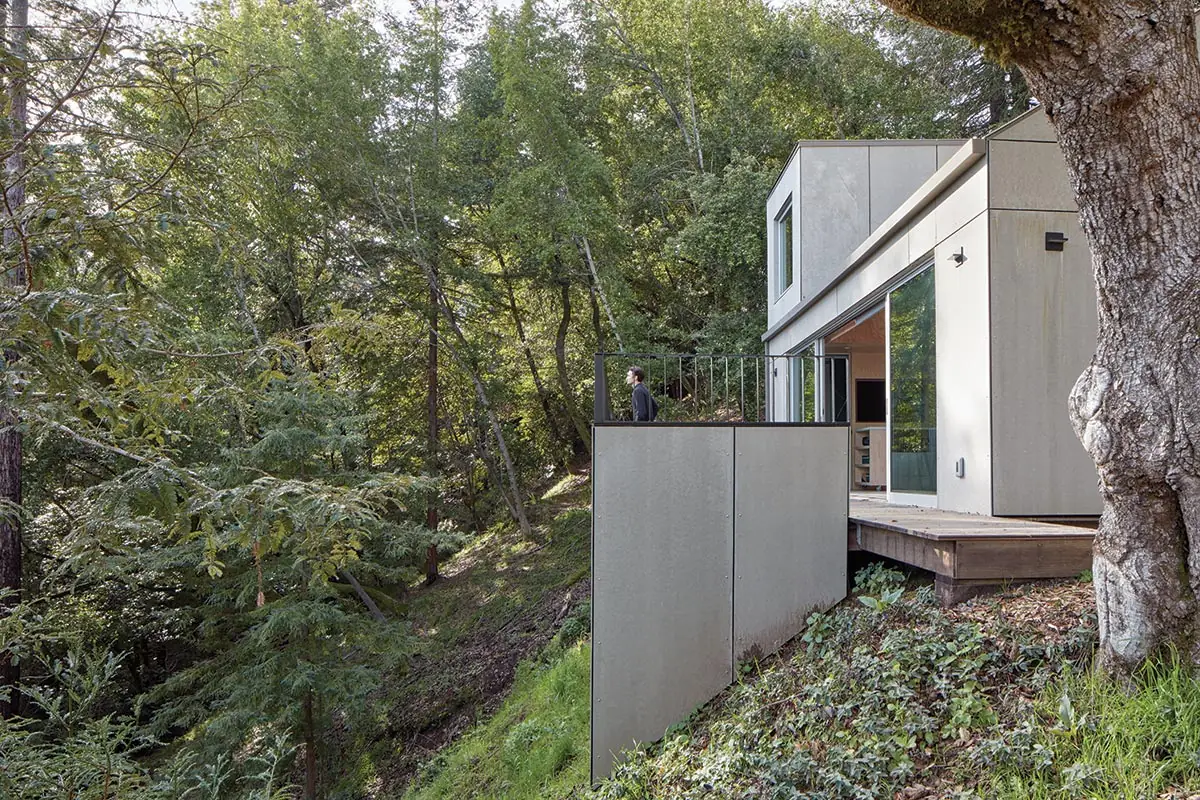
The ADU is located on a steep hillside. Photo © Bruce Damonte, click to enlarge.
The primary living space, opening onto an expansive balcony makes for a sizable and flexible room, with a movable kitchen island and a Murphy bed. “The kitchen island is placed on casters that allow it to roll around, so they can create additional space to have kids playing on the floor,” explains Mork-Ulnes project lead Robert Scott, “or it can be set up as a dining table or placed against the wall when not in use.” The fixed kitchenette along the wall is topped by a 10-foot-long sintered-stone countertop and a white tile backsplash.
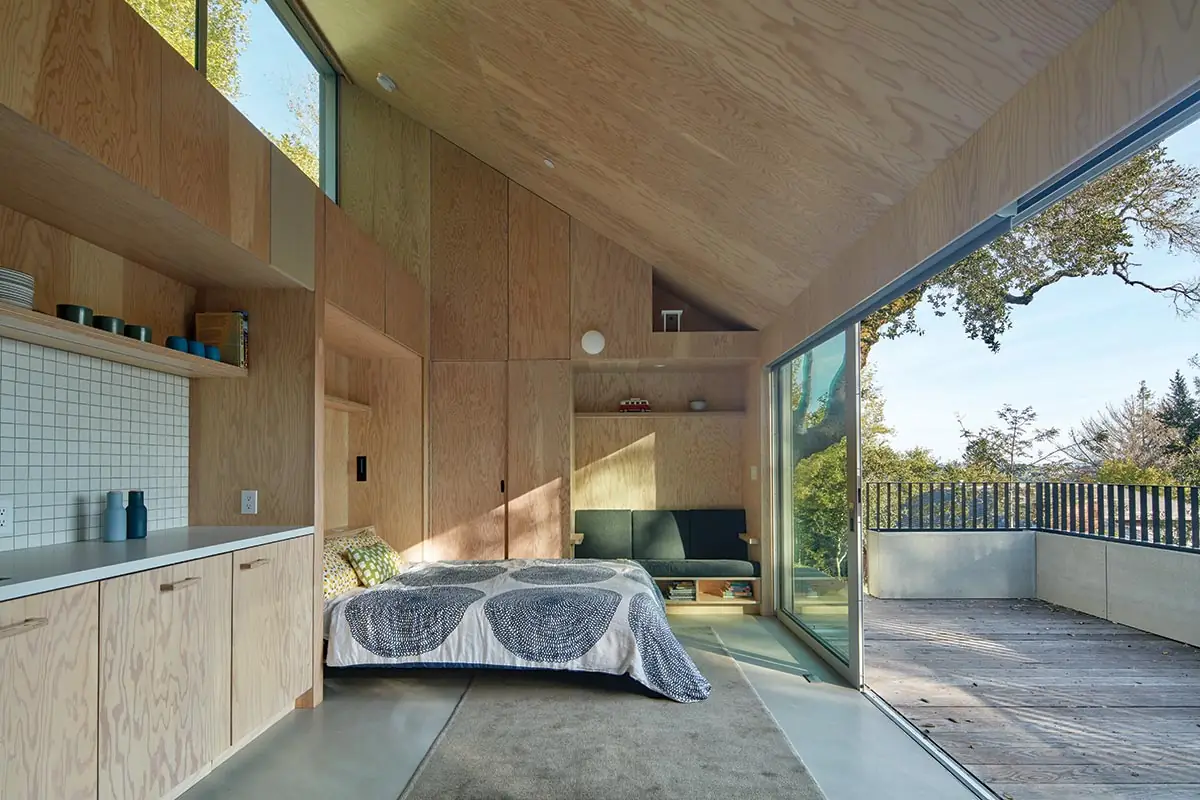
A Murphy bed helps maximize space. Photo © Bruce Damonte
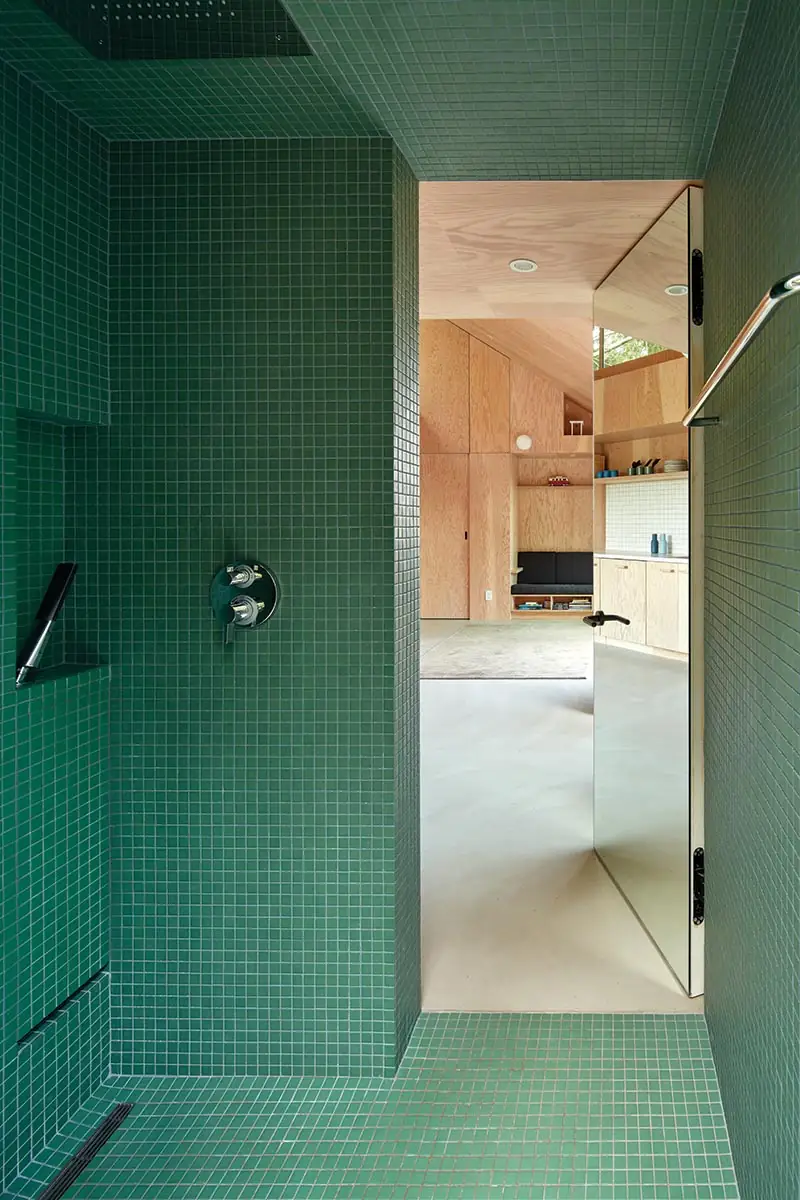
Floor-to-ceiling green tile brings the outside in. Photo © Bruce Damonte
Unvarnished ply boards clad the interior and face the cabinet banks above and below the counter; their soft hue is complimented by abundant daylight that flows from a yawning clerestory window. “Combining the casework with the wall finishes instead of having drywall further decluttered the space,” notes principal Casper Mork-Ulnes. The clients are audiophiles, and the design team seamlessly tucked concealed speakers to the left and right of the clerestory-adjacent cabinets. A half bath, also finished with plywood, is folded into the southwest corner of the ADU.
The shower room, like the primary living space, makes use of its surroundings to visually elongate a limited volume. To the south, the shower opens to the abutting hillside and its tree canopy; that window to nature is emphasized by floor-to-ceiling pine-green tiling and then multiplied by a bathroom-door mirror. On the other side of the room, an acid-etched glass door ensures privacy while allowing a view of the color outdoors.
The result is an economy-size space that punches above its weight.
Credits
Architect:
Mork-Ulnes Architects — Casper Mork-Ulnes, Phi Van Phan, Robert Scott, design leads; Kaoru Lovett, job captain
Engineers:
David Strandberg (structural); Adobe Associates (civil)
General Contractors:
Damner Construction; Axelson Builders
Size:
410 square feet
Cost:
Withheld
Completion Date:
Spring 2023
Sources
Masonry:
Cembrit (fiber cement panels)
Moisture Barrier:
Solitex Mento 1000 (weather-resistant barrier); Intellos Plus (vapor retarder)
Solid Surfacing:
Caesarstone
Paneling:
Seidman Woodworks
Floor and Wall Tile:
Daltile
Special Surfacing:
Duraamen (Skraffino Micro Topping)
Plumbing:
Hansgrohe (faucets & shower set); Blanco (kitchen sink); Duravit (toilets)



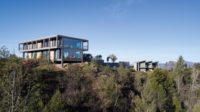
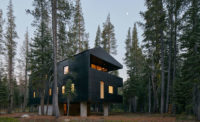
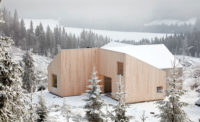
Post a comment to this article
Report Abusive Comment